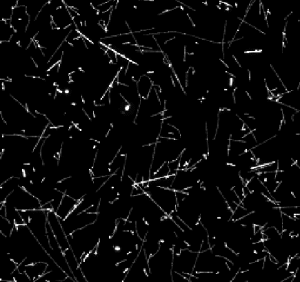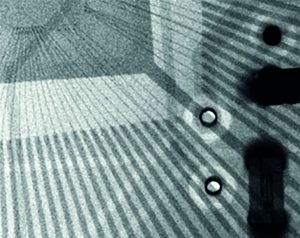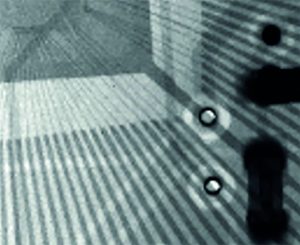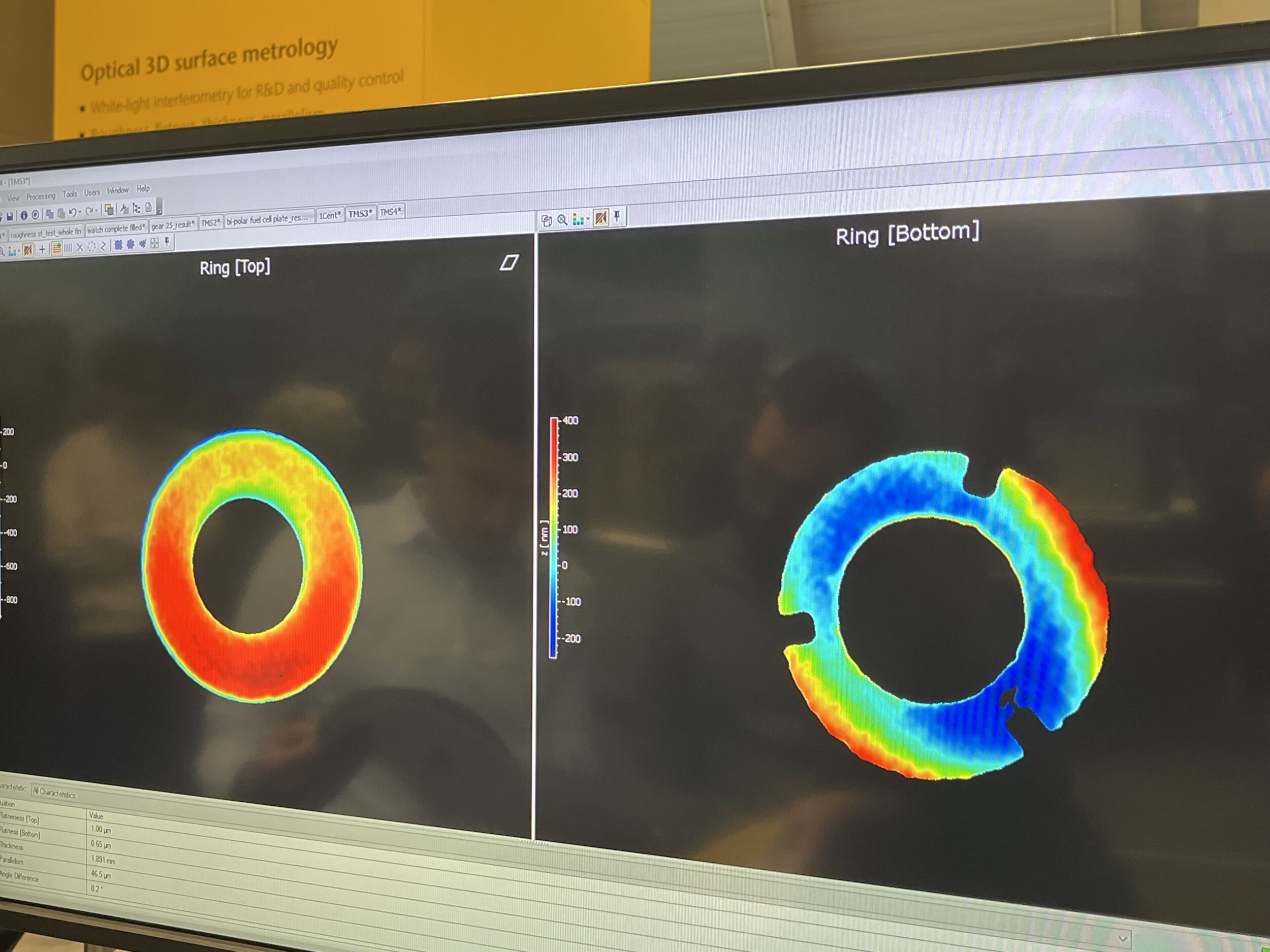Clever Pixels
First Truly Spectral Imaging Detector in the World
Timepix3 (TPX3) is a direct conversion X-ray detector and uses semiconductor or semi-insulator sensors. It has ‚clever‘ pixel electronics capable of processing every detected photon. Contrary to common X-ray imaging detectors, it is capable of measuring simultaneously position, energy and time-of-arrival of every detected photon. Rather than collecting data frame-by-frame the device generates a continuous stream of event data.

Figure 1 | Illustration of single particle sensitivity of Timepix3 device. The tracks of different particles of radiation background (mostly muons and few protons) were recorded in five minutes on board of an airplane. No noise (clean zero) is seen in dark regions. (Figure: Advacam s.r.o.)
The information about detected photon energy is used to create full per-pixel spectra. The precise time measurement for every photon (1.6ns) enables different coincidence based techniques (PET, Compton camera, Time-of-Flight) and applications in imaging of dynamic processes (random vibration suppression, fast scanning). It can be also used to analyses charge generated by radiation quanta and shared between pixels. Therefore, the native resolution of 55m can be improved to 15m in a CdTe sensor 1mm thick. This is the best resolution ever achieved with CdTe sensors (common imaging detectors with CdTe sensors have typically pixels only 100m in size or larger). Moreover, the time information allows correlating and correcting X-ray fluorescences and Compton scattered events inside the sensor further improving the image quality. The AdvaPIX TPX3 modules were designed with special emphasis to performance and the modules contain the latest Cern chips. The fast modules with Si or CdTe pixel detectors Timepix3 can be used in different configurations such as stack of several layers or tiling to cover larger area. Each module contains single Timepix3 device with ultra-fast event-driven data readout to acquire up to 40Mhits per second. A separate USB 3.0 channel for each device assures fast read-out of the whole modular system. The sensor type and thickness is of customer’s choice. Sensors can be even adapted for neutron imaging by deposition of converter layers. Compared to the older Timepix chip the Timepix3 detector offers six times better time resolution, two times better energy resolution, two times lower minimum energy threshold, zero dead time and ten times faster data transfer. Therefore, the module is an ultimate tool for particle detection. Detecting coincidences between particles is easy with the time information coupled with every hit. The software bundled with AdvaPIX allows identifying tracks of individual particles.

Figure 2 | The native resolution of 55μm (right) can be improved to 15μm (left) in a CdTe sensor 1mm thick.














